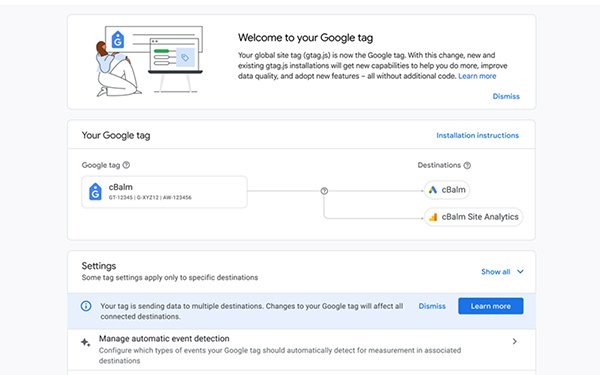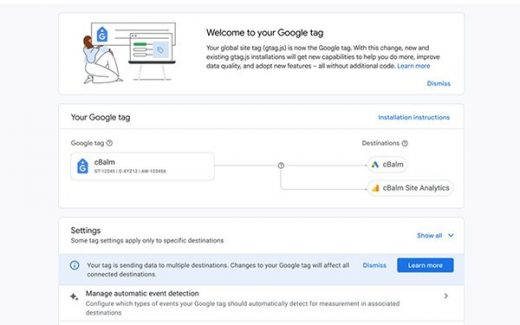Google Simplifies Measurement Tag
Google Simplifies Measurement Tag

Google simplified its reusable tag design to improve data quality. It added features without the need to modify and install additional code. And, centralized the process of identifying paths to take in Google Tag Manager, an enterprise tag management system.
“It’s critical that advertisers have durable, site-wide tagging in place as legacy identifiers such as third-party cookies are phased out,” Scott Herman, group product manager of Tagging at Google, wrote in a post.
He said tagging will help strengthen user privacy, assist marketers to keep up with rapidly changing regulations, and continue measuring performance and modeling insights.
Marketers using content management systems like HubSpot, Squarespace or Wix will have an option to install a new Google tag without any code at all.
The system relies on one reusable tag built on a global site tag (gtag.js), which lets advertisers send event data to Google Analytics, Google Ads and Google Marketing Platform. The idea is to measure impact.
The tag will roll out during next week.
Google’s Herman recommends advertisers place the tag on all website pages to measure the impact of site visitors.
Marketers will eventually have an option to use their existing Google tag installation when setting up another Google product or account, or creating new conversion actions, instead of configuring additional code each time.
Advertisers with multiple instances of gtag.js can combine those tags and centrally manage their settings in the tag screens in Google Ads and Google Analytics.
Herman writes it will become easier to set up site-wide tagging and combine or reuse tags, so marketers can increase the number of tagged pages with consistent configuration. It helps improve measurement, leading to better-quality customer insights.
Marketers also can manage user access to tag settings across products in one dedicated place, giving more control of who has access to critical measurement settings.
(25)


